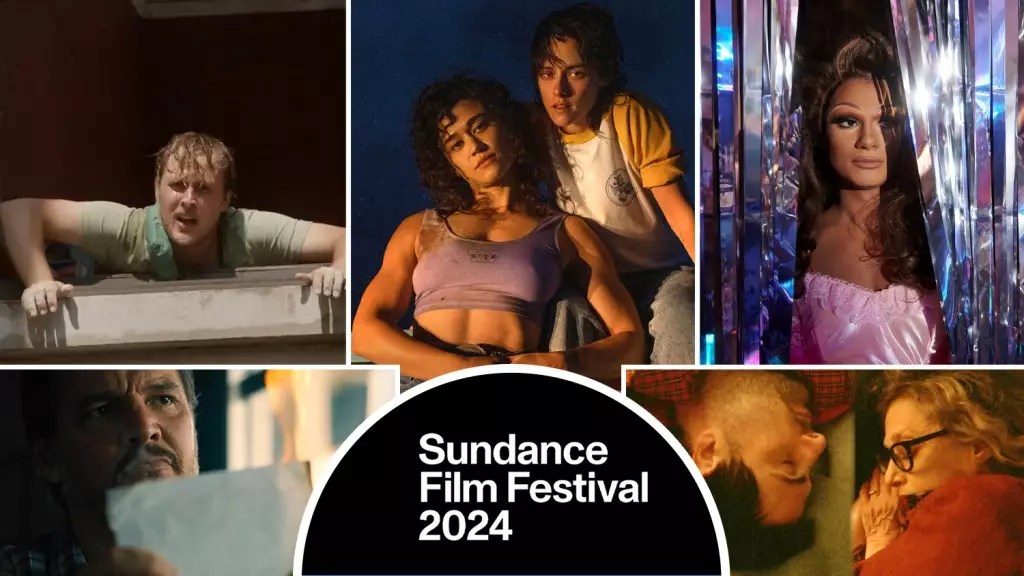The Sundance Film Festival has once again taken over the snowy streets of Park City, drawing in both movie enthusiasts and industry insiders alike. As the festival showcases a wide variety of films, it becomes crucial to examine and critique the key offerings. In this article, we will provide a critical analysis of some of the standout movies that have premiered at Sundance this year.
Ryan Fleck and Anna Boden’s “Freaky Tales” boasts an all-star cast and a slick visual style. However, it fails to deliver a substantive narrative that matches its impressive aesthetics. While the performances are magnetic and full of charisma, the anthology film lacks the depth and coherence necessary to make a lasting impact. Despite its promising start, “Freaky Tales” ultimately falls short of its potential.
For those waiting for Kenneth Lonergan to create another remarkable piece of cinema, “Ghostlight” proves to be a satisfying treat. This funny, intelligent, and occasionally heartbreaking movie explores a family tragedy and weaves it into a compelling redemption story. The film manages to strike a delicate balance between humor and poignancy, never falling into the trap of false sentimentality.
Jane Schoenbrun’s “I Saw The TV Glow” operates as a metaphor for gender dysphoria and delves at length into the influence of pop culture on adolescence. By skillfully exploring these themes, Schoenbrun offers profound insights into the dangers of holding onto unrealistic fantasies. While the film’s focus on these topics is commendable, it occasionally loses its footing and lacks the cohesive force needed to truly captivate its audience.
Amrou Al-Kadhi’s “Doors Wide Open” is a refreshing rebuttal to the often tragic narratives seen in gay-themed films. Bilal Hasna delivers a winning performance as the title character, skillfully guiding the audience through a voyage of self-discovery. While the film flirts with self-pity, Hasna’s portrayal of a petulant yet vulnerable individual effectively captures our sympathy, offering a nuanced perspective on the queer experience.
Initially captivating with its grounded concepts and themes, “Love Me” gradually loses its direction and becomes burdened with conflicting messages. This shift dilutes its humor and charm, leaving the audience feeling confused and disconnected. The film’s potential for greatness is hindered by its failure to maintain a clear and coherent narrative structure.
Theda Hammel’s film offers moments that hint at an insightful character study. Unfortunately, it ultimately succumbs to superficiality, leaving the viewer with a sense of disappointment. The director’s organic and unconventional style choices, while commendable, often bewilder rather than enlighten. Although Hammel demonstrates an impressive feat of micro-budget production, the film’s lack of clarity inhibits its ability to resonate with the audience.
Josh Margolin’s “Thelma” explores the theme of mortality through the lens of an aging protagonist. Despite the weight of the subject matter, the film manages to uplift through its powerful message and June Squibb’s captivating performance. Squibb brings a fiery energy to her portrayal, echoing Bette Davis’ sentiment that old age demands strength. “Thelma” is a testament to the resilience and courage of those navigating the challenges of aging.
As the Sundance Film Festival continues to showcase groundbreaking cinema, it is essential to critically evaluate the films that grace its screens. While some movies impress with their standout performances and thought-provoking narratives, others struggle to live up to their initial promise. Through careful analysis, we can appreciate the strengths and weaknesses of these films and contribute to the ongoing discourse surrounding contemporary cinema.


Leave a Reply